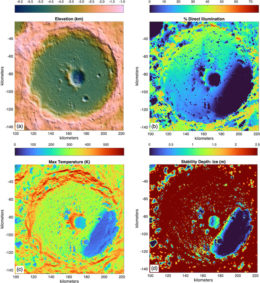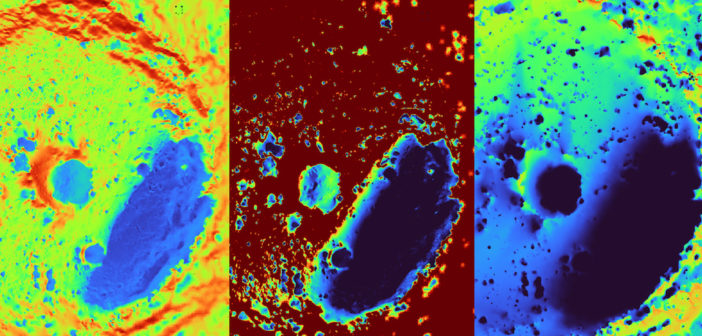
New models of various properties of Prokofiev crater on Mercury: (a) elevation, (b) illumination, (c) maximum temperature, and (d) depth at which ice is stable. These maps have a resolution of 125 meters per pixel. Click for high-resolution version. [Barker et al. 2022]
With daytime temperatures soaring to 427℃ (800℉), Mercury seems like an unlikely place to find ice, but the poles of the airless planet can be surprisingly frosty. Using images and elevation data from the Mercury Surface, Space Environment, Geochemistry, and Ranging (MESSENGER) spacecraft, a team led by Michael Barker (NASA’s Goddard Space Flight Center) inspected a permanently shadowed north polar crater named Prokofiev, which contains a radar-bright region thought to be surface ice. As shown in the images to the right, Barker and collaborators modeled the crater’s elevation, illumination, maximum temperature, and depth below the surface at which water ice could be stable. This modeling confirmed that the crater has the right conditions to host surface ice, and further analysis suggests that the radar-bright region may be a layer of ice up to 26 meters thick. The ice isn’t pure water, though — part of the ice is covered by a dark silicate or hydrocarbon material, the exact nature of which is unknown. To learn more about this icy investigation, be sure to check out the full article below!
Citation
“New Constraints on the Volatile Deposit in Mercury’s North Polar Crater, Prokofiev,” Michael K. Barker et al 2022 Planet. Sci. J. 3 188. doi:10.3847/PSJ/ac7d5a

